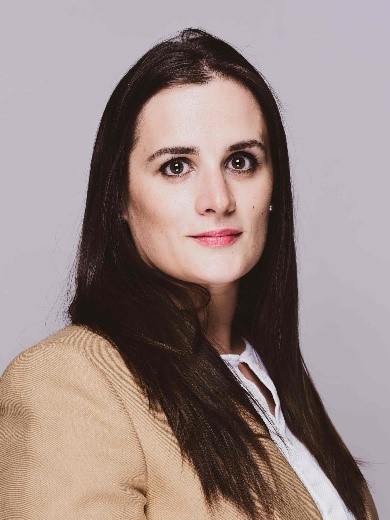Alba Diéguez Alonso

Session: Chemical-Biological Decomposition Processes
Title: New insights into the influence
of intra-particle transport and
inorganic species on the pyrolysis
mechanism of lignocellulosic biomass
Jun.-Prof. Alba Dieguez Alonso studied engineering at the University of Vigo in Spain. Between 2011 and 2015 she did her PhD at the Technische Universität Berlin in the field of biomass thermochemical conversion processes. From 2015 until 2020 she was PostDoc and Group Leader (Group Multi-phase Reactive Flows at the Chair of Energy Process Engineering and Conversion Technologies for Renewable Energies) at the Technische Universität Berlin, with two scientific stays at the Lawrence Livermore National Lab in USA. Since September 2021 she is Junior Professor for Heat and Mass Transfer at the Otto-von-Guericke University of Magdeburg. Her work focuses on the understanding and characterization of the thermochemical conversion of lignocellulosic biomass, mainly pyrolysis, the application of in-situ spectroscopic techniques for the characterization of these processes, and their development for the production biochar.
New insights into the influence of intra-particle transport and inorganic species on the pyrolysis mechanism of lignocellulosic biomass
Biomass is currently an important player in the renewable energy sector and it is expected to perform a key role, as source of green carbon, in both energy and chemicals & materials production in the short and mid-term future. However, biomass presents a hierarchical structure, with high heterogeneity regarding its physical and chemical properties, which poses important challenges regarding the optimization of both conversion process and product quality. This is especially relevant for low-cost biomass, as for example agricultural and forestry residues, due to the presence of impurities such as inorganic species. Generally, thermochemical conversion processes are more robust with respect to biomass high variability and technologies such as pyrolysis are especially adequate for the direct production of chemicals and materials. However, new product-oriented process development requires a better understanding of the multi-scale chemical and physical processes involved in the pyrolysis of biomass. In this way, models need to include more detailed feedstock-specific chemical mechanisms, that account as well for the influence of intra-particle morphology and microstructure on the chemical conversion. In this work, the impact of intra-particle transport limitations, triggering secondary reactions, are considered. In particular, the combined influence of inorganic species, considered catalysts of some of these secondary reactions, and intra-particle transport limitations on the pyrolysis mechanism of lignocellulosic biomass is investigated.






